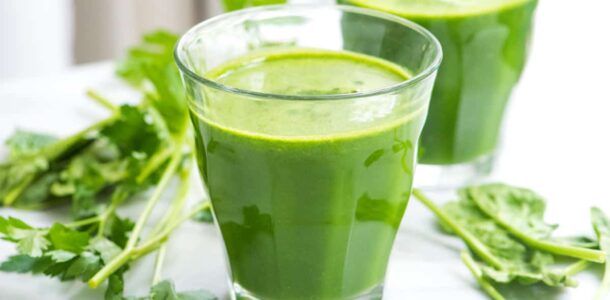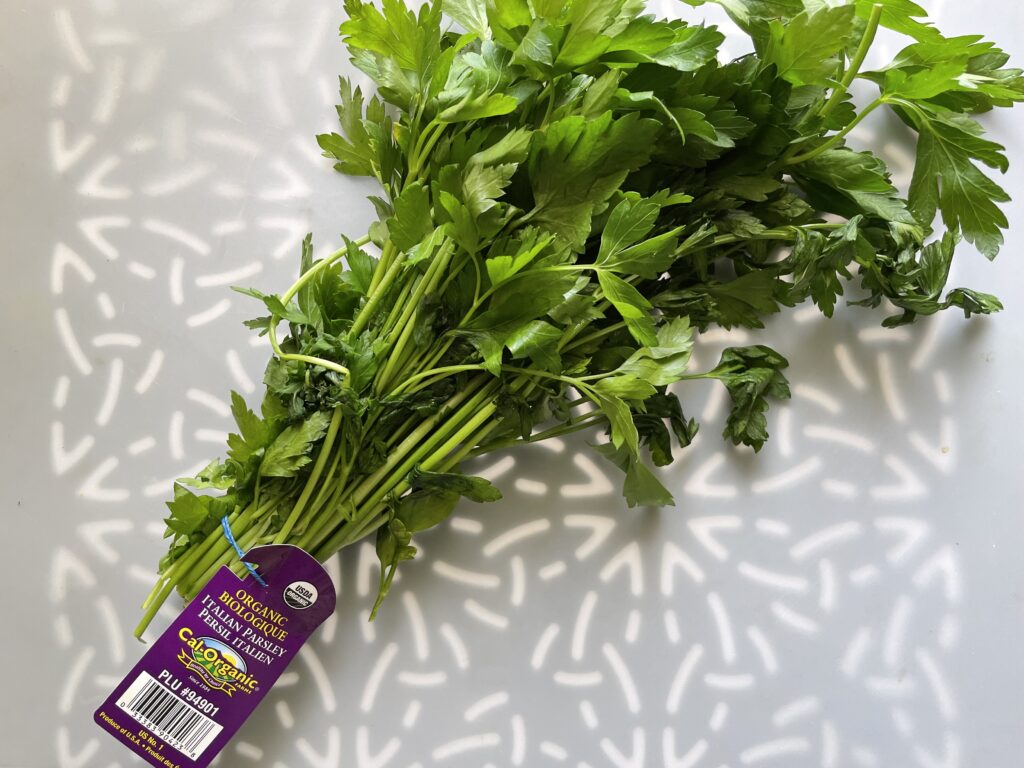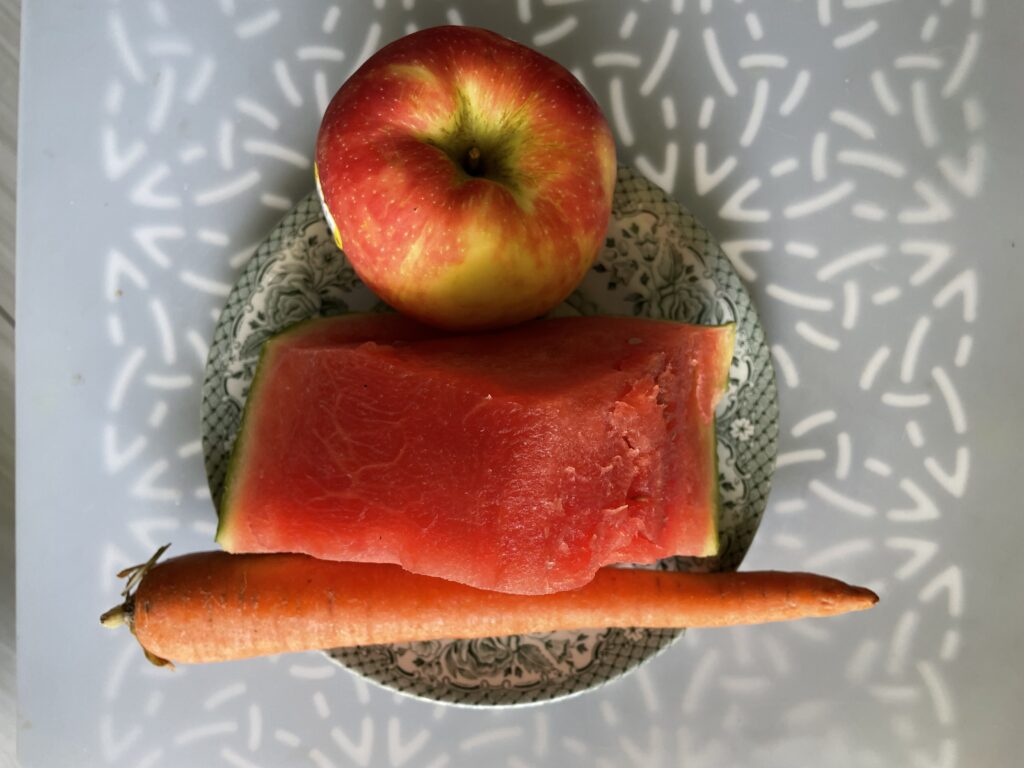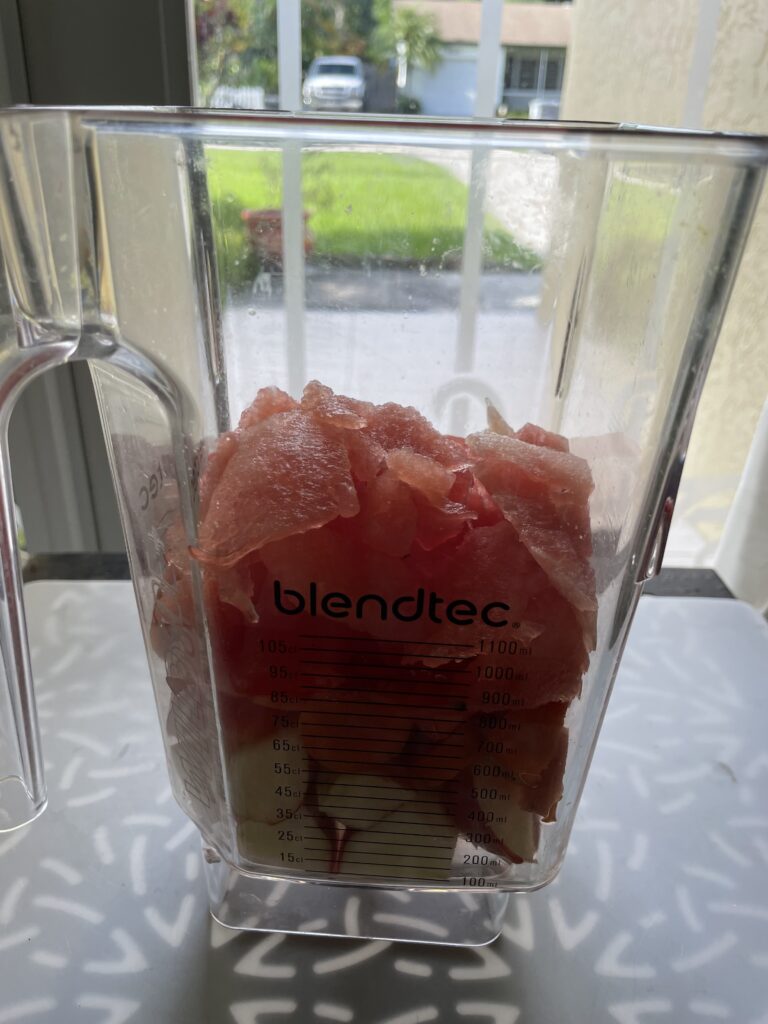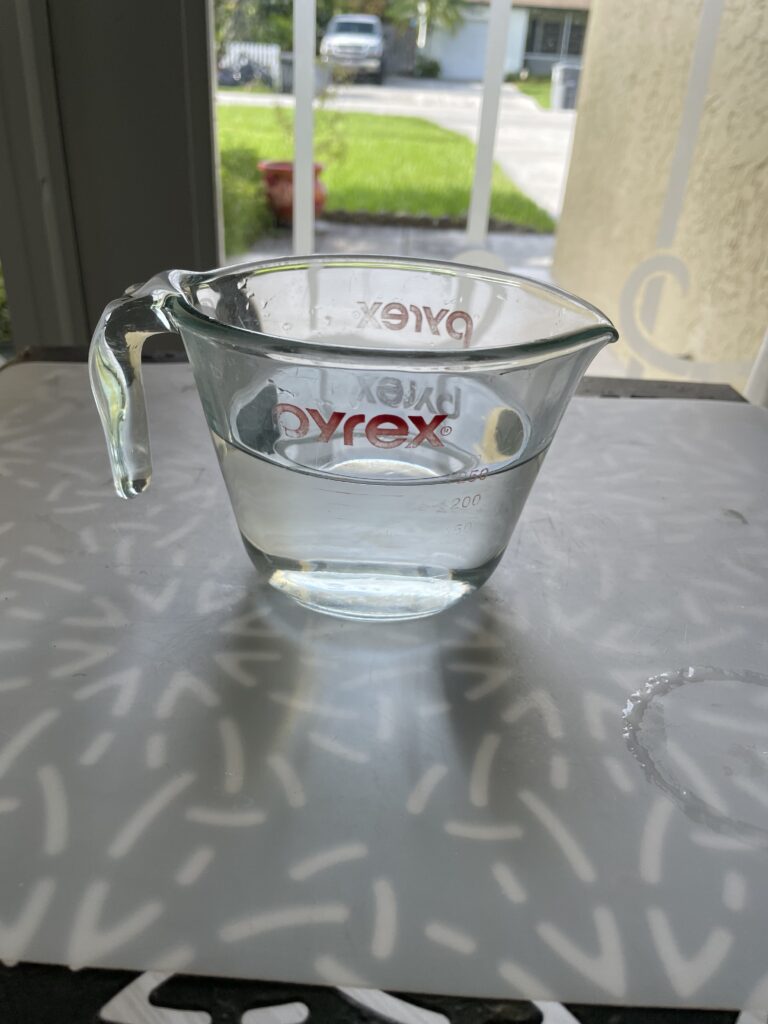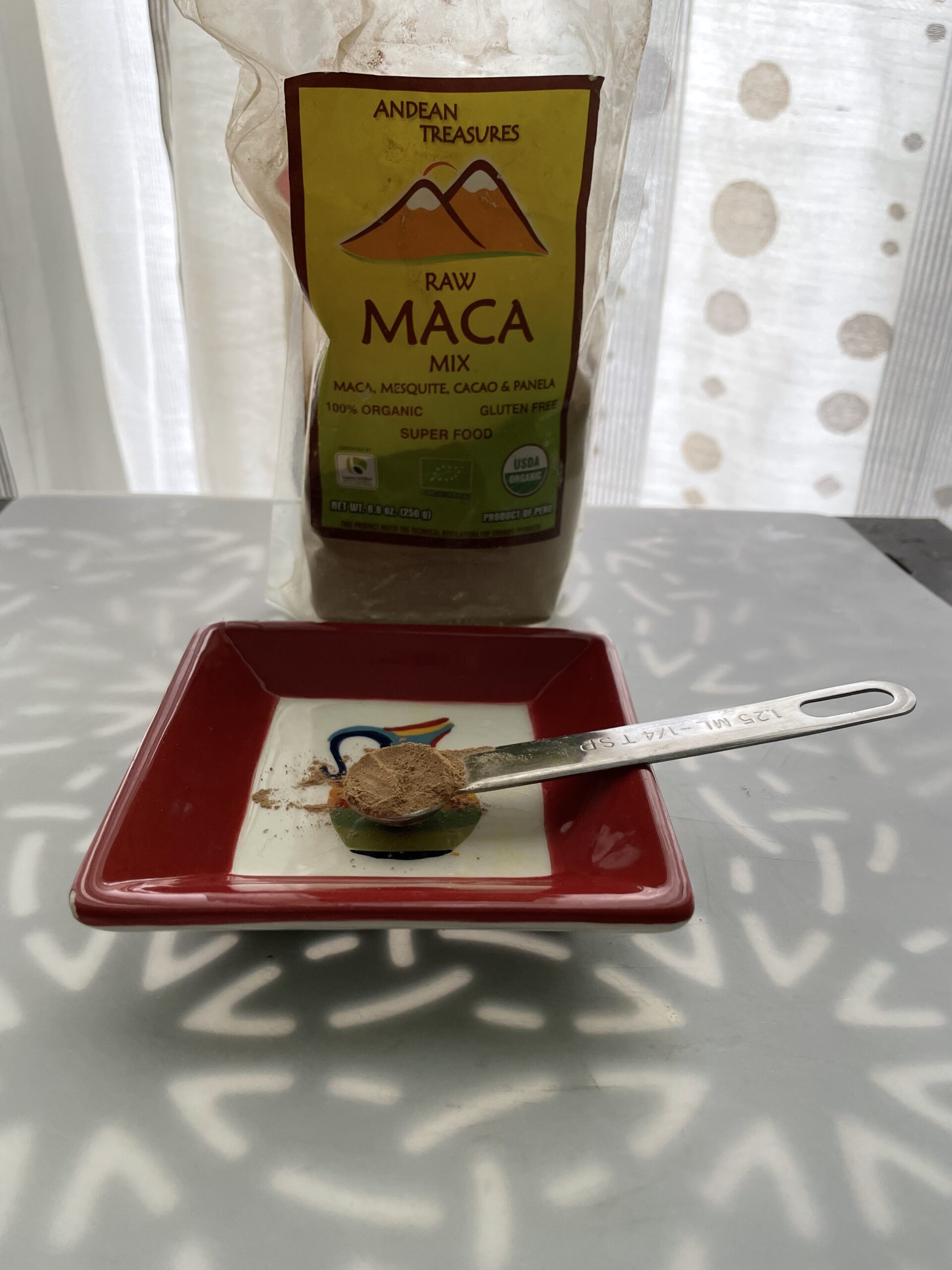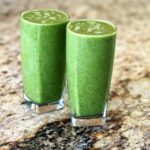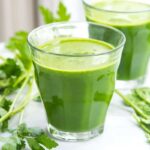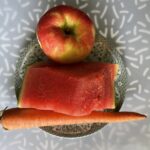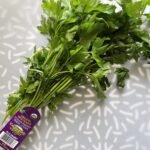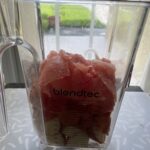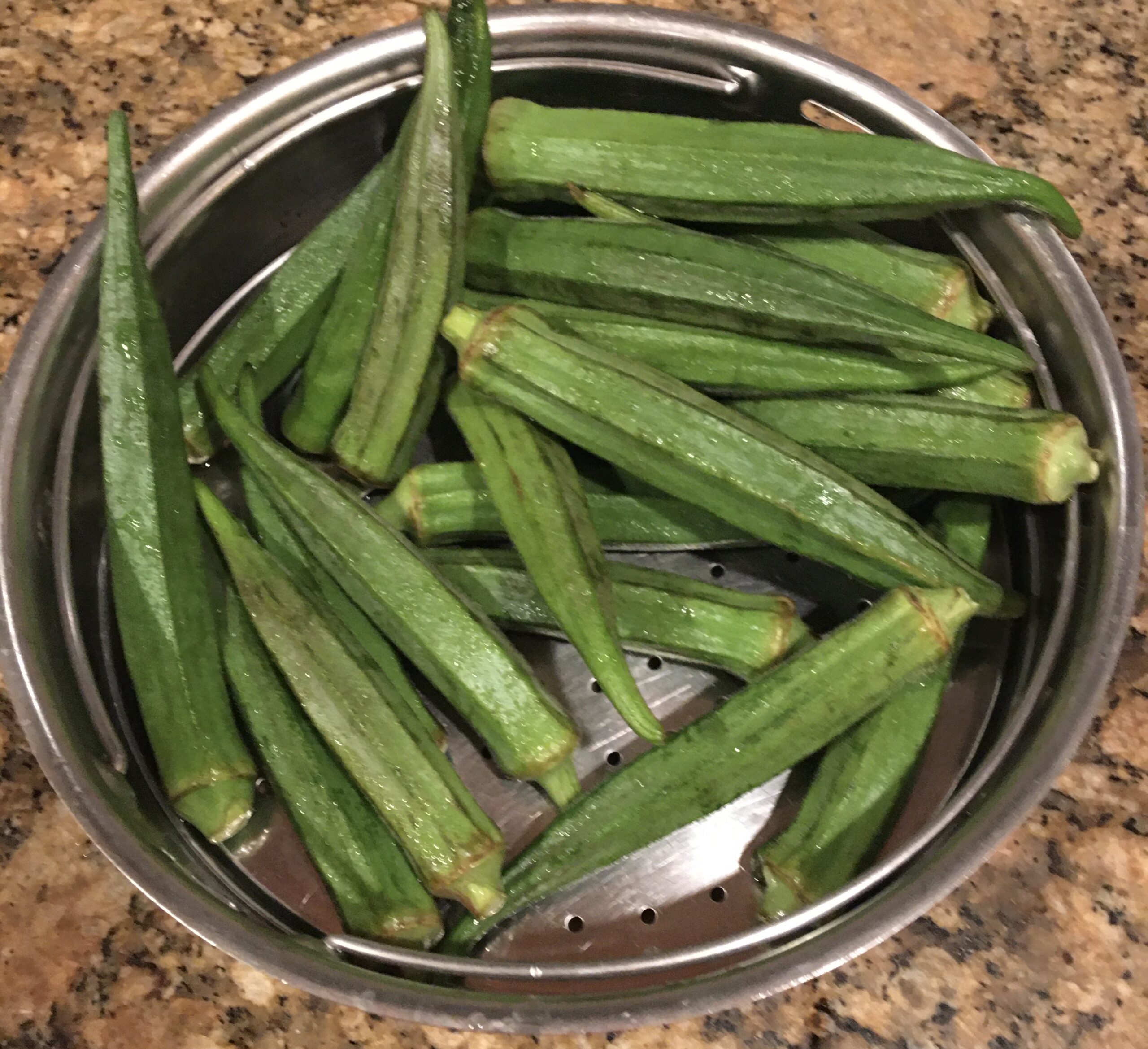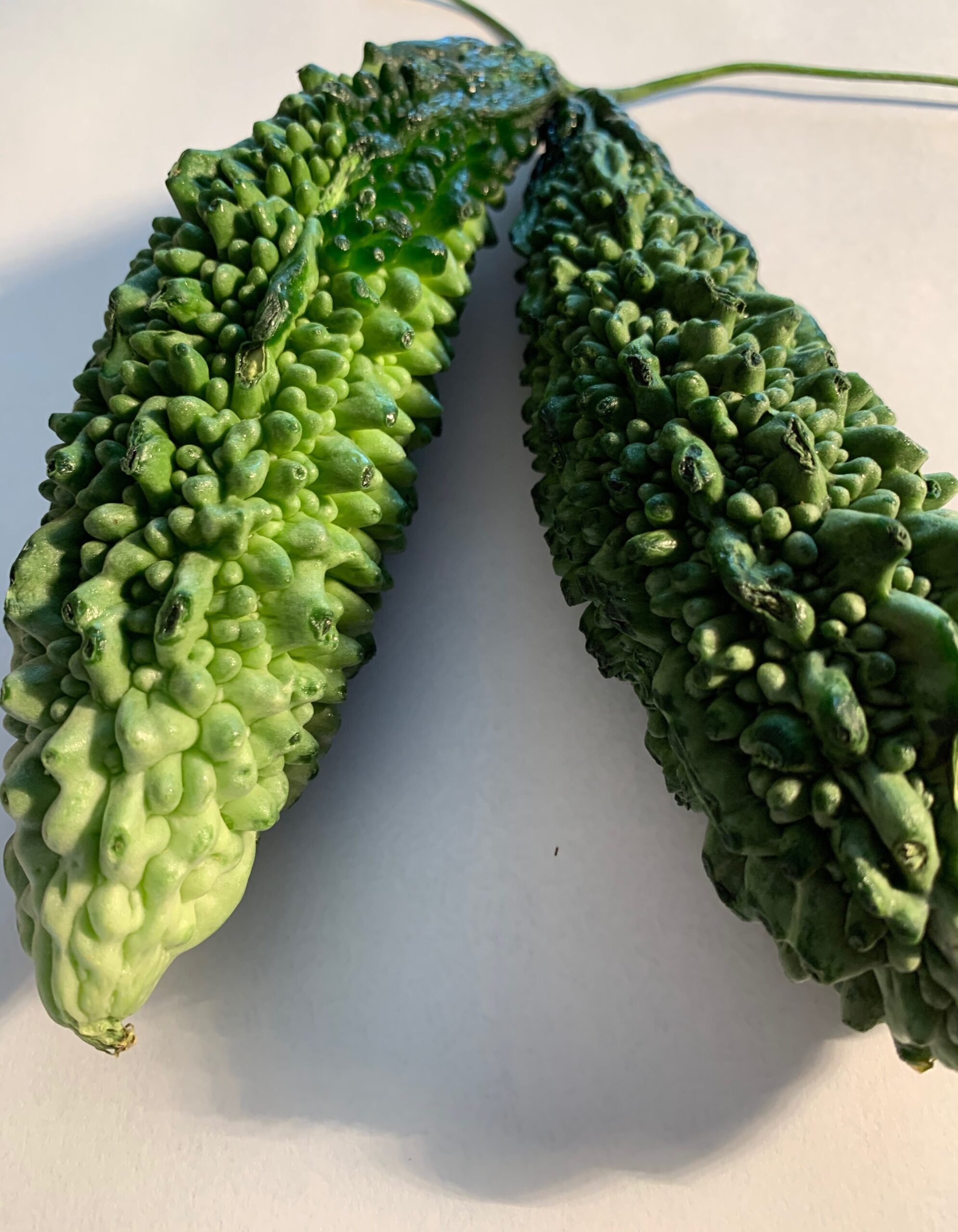Parsley (scientific name – Petroselinum crispum) is an herb used in many types of cooking. It is a species of flowering plant in the family Apiaceae that is native to the central and Mediterranean regions. Though the leaves are eaten as a food in garnishes on sauces and soups, it is available in dietary supplement and tea form. Parsley leaves, seeds, or roots can help treat a number of health conditions, including digestive issues. A tea made from parsley is a traditional remedy for indigestion and intestinal gas. It is often suggested for relief of menstrual cramps and to help eliminate excess water weight. Parsley consumption also benefits people with rheumatoid arthritis as per Seamus Mullen & in his cookbook “Hero Food”.
Modern research has confirmed many aspects of parsley’s complex makeup. Parsley is a natural breath freshener; chewing on a few leaves eliminates bad breath. Just 2tbsp. (8g) of parsley deliver more vitamin K than RDA.(122mcg for women & 138mcg for men). It is indeed a “chemoprotective” food rich in antioxidants and more.
Buying: Several cultivars of parsley are grown of which flat-leaf & curly-leaf varieties are popular. Flat-leaf parsley is tall matures to a ht. of 36″ and more flavorful. Titan is a compact variety that displays small, deep green serrated leaves. Curly leaf parsley is most famous for garnish. It has a bright, grassy flavor with a delicate balance of tang and sweetness.
Buy fresh and bright green leaves; avoid wilted or yellow-colored ones. Storing: Store in a jar half-filled with water; cut 1 ” from the bottom first prior to immersing in water. Cover top loosely with a plastic bag and store in the refrigerator shelf.
Freezing: Parsley can also be frozen in freezer bags and frozen in ice trays with water that can keep for 6 months.
Drying: Excess Parsley from your herb garden can be sun-dried or dried in the microwave between paper towels for 1-2 min in 15-second breaks, and stored in a plastic container for longer shelf life.
History: Parsley is native to the Mediterranean region of southern Europe and Western Asia. According to ancient Greek legend, parsley sprang from the bloodshed by the fallen hero Archemorous, when he was eaten by serpents. The ancient Greeks held the plant sacred and it was never placed on their tables. However, the Greeks used parsley to decorate tombs and made parsley wreaths to bestow on the winners at the Isthmian games, in the same manner as Bay wreaths honored the Olympians. Parsley was used in the Hebrew celebration of Passover.
Parsley has been cultivated for more than 2000 years and it was used medicinally before being consumed as food. Since ancient times it has been used in digestive disorders, bronchitis, toothache, and more. The Romans used parsley as a garnish as well as to cure the morning after the banquet feeling during medieval times.
https://www.redlandsdailyfacts.com/2015/11/23/parsley-a-popular-herb-with-a-long-history/
Ways to add Parsley to your diet
- As a garnish in soups, Lentils (dals), and on pasta
- Blend with juices and shakes
- Chop & add to salads
- Incorporate into homemade bread, marinades, and dressings
- Make a Pesto with cashew nuts, olive oil, Parmesan cheese, and parsley
- Make a Chimichurri sauce by blending parsley, fresh garlic, some apple cider or red wine vinegar, and olive oil and add to grilled vegetables.
- Top Pizza with parsley leaves
Nutrition Facts of Parsley
Petroselinium Crispum
| GI=32; GL =0 | Minerals | Vitamins |
| Energy 36kcal – 1.5% | Sodium 56mg – 4% | Folates 1.52mug – 38% |
| Carb.6.33 g – 5% | Potassium 554mg -12% | Niacin B3 1.313mg – 8% |
| Protein 2.97 g – 5% | Calcium 138mg -14% | Pantothenic acid (B5) 0.4mg – 8% |
| Fat 0.8 g – 3% | Copper 0.149mg -16.5% | Pyridoxine (B6) 0.09 mg – 7% |
| Cholesterol 0mg – 0% | Iron 6.2mg – 77.5% | Riboflavin (B2) 0.09mg – 7.5% |
| Fiber 3.3g – 8.5% | Magnesium 16mg – 12.5% | Thiamin (B1) 0.086 mg -7% |
| Carotene Beta 5054 mug | Manganese 0.16mg – 7% | Vitamin A 8424IU – 281% |
| Lutein Zea Xanthin 5561 mug | Phosphorous 58mg – 8% | Vitamin C 133mg -220% |
| Vitamin E 0.75mg – 5% | Zinc 1.07mg – 10% | Vitamin K 1640mug -1366% |
Health Benefits of Parsley
- Parsley has Anti-bacterial properties: Parsley contains essential oils Apiol and Myristicin, which have antibacterial effects that can fight harmful bacteria such as Staphylococcus aureus.
- Parsley may boost immunity: Research shows that Apigenin an anti-oxidant in Parsley extract may prevent liver damage, enhance liver function, & boost antioxidant levels.
- Parsley can benefit heart health: Parsley contains Carotenoid antioxidants and vitamin C – both have been shown to benefit heart health.
- Parsley can fight breast cancer: According to a 2017 study in the journal Geroscience, Apigenin, a natural substance in parsley shows parsley as a nontoxic treatment for human breast cancer.
- Parsley can fight inflammation: Parsley is high in antioxidants vitamin A, C & E which can help soothe inflammation to reduce the risk of arthritis as per Dr. Brunilda Nazario MD. It is also an excellent source of flavonoids that help reduce the risk of many chronic diseases like Cancer, Atherosclerosis, Alzheimer’s, and Parkinson’s disease.
- Parsley may improve bone health: Parsley is rich in vitamin K, Calcium, and Magnesium – all required for bone health.
- Parsley may support healthy blood sugar levels: Parsley has been found to effectively reduce blood sugar levels. Adding parsley to your diet may help support healthy blood sugar levels.
- Parsley may aid kidney health: Parsley has anti-inflammatory properties due to its antioxidants, flavonoids, carotenoids & vitamin C. It may keep the kidneys healthy by reducing high blood pressure since it is high in nitrates that help dilate blood vessels which improves blood flow.
- Parsley makes grilling safer: Parsley minimizes cancer-causing effects of heterocyclic amines (caused when proteins are cooked at high temperature) according to Amanda Capriglione RD, CDN.
- Word of Caution: Parsley is relatively high in Oxalates – compounds that may increase kidney stone risk. People with hyperoxaluria must limit their intake of parsley, spinach, beets, etc.
- Possible side effects: Parsley being high in vitamin K which assists in blood clotting people taking Coumarin or other blood thinners should avoid taking large doses of this herb.
- Parsley is a natural diuretic – It acts as a water pill to cause the body to lose water. Taking parsley with other diuretics like Lasix or Microzide may cause the body to lose too much water, which may make you dizzy or cause your blood pressure to dip too low.
- If you take lithium only eat parsley under your doctor’s supervision as it may cause lithium toxicity
- Pregnant women should not consume excessive amounts of parsley since it may stimulate contractions.
How to make Parsley Detox Shake
If you have a big event planned this is the perfect beverage to help you reduce any excess water weight. The parsley, cucumber, and celery all work as a diuretic. Carrots are good for the eyes. Cinnamon powder helps diabetics with balancing sugar levels & Maca powder is a great immune booster. Watermelon is a super thirst quencher. The lemon and ginger are powerful anti-inflammatory and add a great zing to the shake.
- Option 1
- Wash parsley and drain in a colander.
- Core apple and cut into wedges; Slice Carrot.
- Peel ginger, turmeric and grate.
- Place all the ingredients – parsley, red apple & carrot slices, ginger, turmeric, honey,+ water in a blender and process until the juice is homogeneous.
- Squeeze fresh lemon juice; add Cinnamon & Maca powder and mix well.
- Pour into a glass and enjoy it as a refreshing drink.
- Option 2
- Clean parsley leaves and chop; pluck mint leaves from stem ; rinse camphor leaf (if using)
- Cut cucumber, celery stick & green apple into slices.
- Blend all the ingredients with lemon juice & water on high, until a homogeneous shake is formed.
- Pour in two tall glasses and serve with ice.
TIPS
If using an immersion blender or food processor, blend the ingredients in the container; crush ice prior to adding ; grate the apples along with ginger; and chop parsley for a smooth juice

